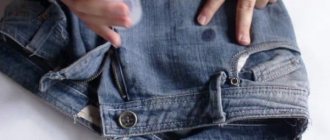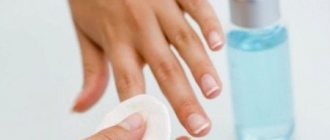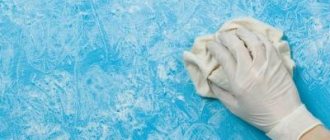By the end of the twentieth century, very durable water-soluble acrylic paints became widespread. They are an aqueous dispersion of polyacrylates with the addition of pigments and various additives. The paint can be diluted with water, but when dried it forms a dense film, insoluble in water and resistant to ultraviolet radiation. Decorative paints are used for interiors and facades, cars and bathroom restoration, painting and nail services.
How to dilute acrylic paint
Thickened acrylic paint can be diluted in several ways:
- Since this coloring matter contains water, it can be dissolved with the same liquid. But keep in mind that the water must be extremely clean and of high quality, without chemical impurities. To do this, dried water-based paint must be diluted with water with a construction mixer in a separate container. If you plan to use the entire mixture, dilute it directly in the jar. Water should be added little by little so as not to make the paint too liquid. If your base has a rich tone, then after diluting with water the color will fade a little, so you will have to add a coloring pigment.
- Special thinners-solvents for acrylic paint. A huge number of them are produced. The main advantage is improved coating properties and faster surface drying. In addition, solvents can impart a matte or glossy finish. The thinner is a transparent liquid with a specific odor, which quickly evaporates as the mixture dries.
Features of water use
Before diluting acrylic paint with water, make sure the aqueous liquid is pure. It should also be cold. Be sure to prepare a container for the experiment, in what ratio you need to dilute the paint.
The relationships can be as follows:
- The 1:1 option is used for the base layer. The paint is not too thick, applies evenly, and covers as well as possible.
- Option 1:2 assumes a structure that does not spread and easily saturates a brush or roller. The layer turns out thin and smooth.
- Option 1:5 has a liquid structure, in which the color is practically not retained. In this case, you need to add a coloring pigment. This mixture is most often intended for painting figured and small products. It dries quickly, but you will have to apply many layers.
- The 1:15 option is more reminiscent of regular water with a slight tint. Used to create a smooth color transition - a gradient effect.
Features of using thinners
Solvents intended for acrylic vary in degree of drying:
- Fast speed is used in cold weather conditions. As you know, low temperatures do not allow paint to quickly adhere to the surface. With the help of a thinner this becomes possible.
- Average speed is considered universal. It is mainly used for interior work with normal temperature conditions.
- Low speed is used at elevated temperatures. If the water evaporates too quickly, the paint will begin to lose its properties, which should not be allowed. A low rate solvent will reduce the evaporation rate.
When storing, follow the instructions. Be sure to close the lid tightly and place the solvent container vertically. The room temperature should be cool.
The basis of thinners based on the composition of the paint
Thinners for acrylic paints are different based on the main active ingredient:
- Solvent, gasoline and the like. Disappears quickly.
- White Spirit. The evaporation rate is high.
- Kerosene has a medium volatility rate.
- Turpentine evaporates slowly.
In what cases is dilution required?
Acrylic paint is diluted if:
- this is required by the technical data of the LKS;
- this is necessary for adhesion to the surface to be coated;
- the dye has thickened or begun to dry out.
In the first option, pay attention to the recommendations from the manufacturer, who in the instructions provides step-by-step guidance on which solvent for acrylic paints to use and how to do it. In the second and third cases, the question: how and with what to dilute acrylic paint is decided based on the direction of the upcoming operations. For example, how to paint a ceiling without streaks with acrylic paint. A substance that is too thick or thin will not solve this problem. For uniform painting of the ceiling and walls, the composition should be dense, but not thick. Otherwise you will have to apply 3-4 layers.
Types and composition of enamel
Any industrial automotive paint consists of the following components:
- Binder.
It ensures fixation of car enamel on a metal or plastic part or element to be painted, due to which the car body acquires a uniform, smooth, glossy surface; - Coloring pigment
. The powdery component of the paint, which is responsible for the resulting shade and its saturation; - Solvent
. Gives the paint and varnish material a certain degree of viscosity, ensuring uniform and highest quality spraying.
After applying auto enamel to a part or body structure element, the solvent gradually evaporates, leaving a durable and strong composition of color pigment and binder. The long service life and impeccable performance of the selected automotive paint are determined by the degree of its hardness and elasticity.
Depending on the chemical composition, there are several types of auto enamel, which is important to consider before choosing a solvent:
- Alkyd
. The main component of the enamel is an oil resin, thanks to which rapid polymerization of paintwork materials on the surface of the body is achieved under conditions of normal humidity and air temperature. Alkyd paint is not intended for complete vehicle painting, since it requires multiple applications of varnish and the need for subsequent polishing. The rapid drying process of auto enamel can lead to the appearance of numerous defects; - Melamine-alkyd.
The paint polymerizes at high temperatures - from 110 to 140 degrees, and is usually used in factory conditions. Auto enamel creates a durable, reliable coating on the surface of the body that is resistant to adverse external factors; - Acrylic.
The composition contains only two components - a color pigment and a hardener; it has gained wide popularity among car enthusiasts due to the absence of the need for subsequent application of varnish. After painting with acrylic paint, the surface acquires a rich shade and glossy shine; - Nitro
. Used when performing local repair work, the main advantage of auto enamel is the rapid polymerization process (at ambient temperatures above 20 degrees it takes half an hour).
According to the degree of concentration, paint is divided into three groups - high-filled, medium-filled and low-filled. When choosing the type and amount of solvent used for diluting car enamel, this parameter must be taken into account; in this case, when painting the body, the paint will not dry out too quickly, which can lead to the appearance of a large number of defects.
Note! Low-fill car paint should not be diluted with large amounts of solvent.
General information
Next, we will look at the most popular of them, because the result and quality of your work will depend on the correct choice of solvent for acrylic paints.
Difference between thinner and solvent
Despite the fact that the words are very similar in meaning, incorrect use of these components can ruin not only the paint, but also the finished result. To avoid having to run to the store for a new can of paint, you should remember these differences.
The thinner does not particularly affect the quality of the product itself, but it changes the color saturation and also changes the thickness
It is important to remember that when using a thinner, the paint dries faster, and therefore you have to work with it in an accelerated mode
The solvent is useful when the task is to wash off paint from a surface or remove a dried layer. At the same time, acrylic becomes more liquid, and accordingly, the drying time increases significantly.
Types of solvents for acrylic paints
Acrylic is never used in its pure form for painting or finishing work. Due to rapid drying, there is a high probability of obtaining an uneven surface with marks from a brush or sponge. For the same reason, it is recommended to wash the tools used, especially brushes and rollers, immediately after finishing work. Otherwise, after the paint has dried, it will be easier to purchase new brushes than to clean the old ones.
How to revive dried paint?
It often happens that the acrylic left after painting dries out. The water evaporates and the paint loses its quality characteristics. The irreversibility of the process leads to the fact that only through dilution can the paint be revived. Just remember that it will not acquire its previous properties.
If the acrylic paint is very dry, grind it into powder with a sharp object and then pour boiling water over it. After a few seconds it is drained and the manipulation is repeated. After sufficient heating, the paint can be stirred. True, it will no longer have a uniform structure, but it can be painted.
Some craftsmen manage to resurrect paint that has turned into a tight clot. To do this, carry out the same procedures by adding alcohol to the water. Of course, in this case there is no point in talking about good coverage.
What to do if acrylic paint has dried out?
What to do if your acrylic paints have dried out? After all, quite often after painting there is a little mixture left, and it’s a shame to throw it away. Over time, it begins to thicken greatly. But this is not a reason to be upset, since acrylic, unlike other types of paints, can be restored. Here are some useful and effective recommendations:
- Initially, you need to determine the extent to which the paint has dried. After all, if it dries out a little, it is much easier to restore it.
- If the mixture has not thickened much, but there are already clots, simply dilute it with water or a special thinner. In this case, you can add a little alcohol to the water.
- If the paint has dried out excessively, to the point of hardening, do not be discouraged! The situation can be fixed. So, you need to take a sharp tool and try to crack the hardened areas. Then grind them to a powder. Next, heat the water to a boil and pour it into the jar with the crumbs. After waiting for 20-30 seconds, drain the boiling water and add a new portion of water. Do this 3-4 times. During the last pour, leave the water in the jar and mix with the powdery mass. Such diluted paint has reduced characteristics, but if there is no other option, then you can use it. In order to improve the performance and properties, you can add a very small amount of boiling water, and after mixing, add a factory thinner.
- If acrylic paint has thickened and turned into one solid lump, then it is better to throw it away, because it has practically not retained its properties. However, there are situations when paint is simply necessary. For example, for painting a bench on the street, a table in the country, and so on. In this case, you can revive it in the same way as the previous one. But with the difference that the last time you need to dissolve the crumbled paint not just with boiling water, but with the addition of alcohol.
How to dilute acrylic paint
Thickened acrylic paint can be diluted in several ways:
- Since this coloring matter contains water, it can be dissolved with the same liquid. But keep in mind that the water must be extremely clean and of high quality, without chemical impurities. To do this, dried water-based paint must be diluted with water with a construction mixer in a separate container. If you plan to use the entire mixture, dilute it directly in the jar. Water should be added little by little so as not to make the paint too liquid. If your base has a rich tone, then after diluting with water the color will fade a little, so you will have to add a coloring pigment.
- Special thinners-solvents for acrylic paint. A huge number of them are produced. The main advantage is improved coating properties and faster surface drying. In addition, solvents can impart a matte or glossy finish. The thinner is a transparent liquid with a specific odor, which quickly evaporates as the mixture dries.
Features of water use
Before diluting acrylic paint with water, make sure the aqueous liquid is pure. It should also be cold. Be sure to prepare a container for the experiment, in what ratio you need to dilute the paint.
The relationships can be as follows:
- The 1:1 option is used for the base layer. The paint is not too thick, applies evenly, and covers as well as possible.
- Option 1:2 assumes a structure that does not spread and easily saturates a brush or roller. The layer turns out thin and smooth.
- Option 1:5 has a liquid structure, in which the color is practically not retained. In this case, you need to add a coloring pigment. This mixture is most often intended for painting figured and small products. It dries quickly, but you will have to apply many layers.
- The 1:15 option is more reminiscent of regular water with a slight tint. Used to create a smooth color transition - a gradient effect.
Features of using thinners
Solvents intended for acrylic vary in degree of drying:
- Fast speed is used in cold weather conditions. As you know, low temperatures do not allow paint to quickly adhere to the surface. With the help of a thinner this becomes possible.
- Average speed is considered universal. It is mainly used for interior work with normal temperature conditions.
- Low speed is used at elevated temperatures. If the water evaporates too quickly, the paint will begin to lose its properties, which should not be allowed. A low rate solvent will reduce the evaporation rate.
The effect of diluted paint directly depends on the proportions of the mixture of the coloring matter and the thinner. So, you can get a transparent surface, a thin layer or a thick one.
When storing, follow the instructions. Be sure to close the lid tightly and place the solvent container vertically. The room temperature should be cool.
The basis of thinners based on the composition of the paint
Thinners for acrylic paints are different based on the main active ingredient:
- Solvent, gasoline and the like. Disappears quickly.
- White Spirit. The evaporation rate is high.
- Kerosene has a medium volatility rate.
- Turpentine evaporates slowly.
The nuances of using a solvent
There are no special rules for the use of solvent. All recommendations depend on the purpose of the staining. Manufacturers produce special solvent compositions that can add new properties to paintwork materials. With their help, you can give them matte, shine, and change the consistency of the mixture. All these characteristics of the solvent are indicated on its packaging. It should describe what exactly a particular composition is suitable for. The fresher the solvent, the better the result.
To keep the color bright and rich, just add a small amount of solvent. To obtain a transparent effect, its volume is increased several times.
If the paint will be applied using a spray gun, the material must be made more liquid. Only special types of solvent are suitable for this. They make it possible to give the mixture such a consistency that the spraying occurs in an even layer.
It is important to understand that the use of such a substance can provoke some changes in the characteristics of paintwork materials, both for the better and for the worse. This applies to shade, strength, drying and external properties.
It has already been noted how solvents are divided according to drying speed and how they are affected by the temperature in the place where the compositions are mixed. This is important to consider when choosing the right product.
If the paint will be applied using a spray gun, the material must be made more liquid.
Dilution nuances
Knowing what you can dilute the source with, you will not spoil the paint and bring it to the desired consistency.
Important!
To obtain the optimal composition, you should make a test sample and check how well it matches the required result.
The water used for dilution must be clean and cold.
Sometimes it becomes necessary to use a mixture of water and alcohol as a solvent.
The industry produces special solvents for acrylic compositions. These are chemical compounds that change the structure of the mixture. As a result, a new composition with different properties is obtained. The result of this dilution will be a glossy or matte surface.
How to dilute with water
In its original form, acrylic paint has a thick consistency, so it needs to be diluted. For this, special solvents or products recommended by the manufacturer are used.
However, you can use a simple and affordable means for dilution - water. This component is initially included in the composition, so it does not disturb the texture and makes the consistency convenient for application.
It is important to understand that the proportion of water must be strictly observed so as not to spoil the original properties. In addition, for these purposes you will only need clean and cool water, without additional impurities.
In painting work, four types of dilution proportions are used:
Ratio 1:1. If you add water in equal quantities to the volume of paint, you will get a consistency suitable for applying a base coat. The liquid will be thick, but will not stick to the roller or brush and will lie evenly over the surface.
Ratio 1:2. If you add two parts of water to one part of paint, you get a composition of a mobile consistency, creating a thin layer on the surface to be painted. Used on smooth surfaces to reduce the intensity of dark colors.
Ratio 1:5. If the amount of water added is 5 times the volume of paint, a liquid composition is obtained - tinted water, which will penetrate between the fibers of the working tool. When applied, a barely noticeable layer is formed, which will look interesting when painting textured surfaces.
Ratio 1:15. In this case, the result is ordinary water with a small amount of dissolved dye. This composition is used to create smooth transitions between shades and gradient color designs.
Measure the required amount of water with a syringe or measuring cup to maintain the recommended proportions.
Be careful: you need to dilute acrylic paint with small portions of water, adding gradually. In this case, you cannot stop stirring.
Features of using water as a solvent
To dissolve acrylic, take cold purified water and a container in which to dilute the paint. Then the proportion is selected experimentally:
- 1 to 1: the resulting paint is suitable for creating a base layer, since it is not very thick, adheres well to the surface and evenly paints parts.
- 1 to 2: the result is a coloring composition that tends to penetrate well into the structure of the soft part of the roller and does not spread. This proportion gives a smooth surface with a thin layer.
- 1 to 5: liquid structure leading to loss of original color. Painting surfaces without adding pigment is allowed in the case of multi-layer processing.
- 1 in 15: more like slightly colored water. This proportion is recommended for creating a gradient (a smooth transition from one color to another).
To maintain the ratio of parts, water can be measured using a graduated glass or a large-volume syringe. The liquid is added to the acrylic paint gradually, the resulting composition must be constantly stirred.
Water
What is the difference between solvent and thinner
Before choosing one of these tools to solve the problem, it is worth understanding their differences and features. The solvent is a volatile liquid of organic origin, such as alcohol or ether. It can also be a mixture of these liquids. Used to dissolve film-forming substances and give paints the desired consistency.
Thinner also refers to volatile liquids of an organic nature, used to reduce the viscosity of the paint composition, thereby achieving a consistency suitable for good application to the surface.
The liquids are quite similar, so they are often confused. Solvents are often used in the manufacture of paint and are introduced at the production stage. The basis of the paint and varnish material is a solid or viscous substance. Therefore, the solvent allows you to achieve a form of composition that is convenient for work. When this substance is added, the paint will remain in a liquid state and will not dry until the surface is covered with it. Due to the ability to influence the structure of the composition, the solvent is a rather aggressive product.
Thinners are not so aggressive. Their composition does not dissolve the resin, they only dilute it to the desired degree of viscosity. The key task is dilution. That is, a change in viscosity, but not structure, which is why they are more gentle.
Solvents are often used in the manufacture of paint and are introduced at the production stage.
What is better to use, is it possible with water?
When the composition has dried, the question arises of how to dilute the acrylic paints. Due to the fact that they contain quite a lot of water, it can also be used to change the consistency for the better.
If the material is dry, water will not help. When added to a jar, a suspension is formed consisting of pigments and acrylic particles in a liquid. The material will lose strength and coils of composition will appear on the surface.
Acrylic can be diluted with water. But, only strictly observing certain proportions and doing it once. You won't be able to use this method all the time.
Acrylic can be diluted with water. But, only strictly observing certain proportions and doing it once.
When selecting the appropriate dilution mixture, it is important to consider many factors, including:
- Temperature. The room temperature should be in the range from 15°C to 20°C;
- Compound. You should know the degree of purification of the substance with which you plan to dilute it. No impurities are allowed. In the case of water, it must be settled or distilled;
- Proportions. If you make mistakes, then the consistency will be too thick or liquid. The quality of the material will be damaged.
You should know the degree of purification of the substance with which you plan to dilute it.
In addition to water, thinners and solvents can be used. There are several main groups that are used for coatings:
- Artistic. They are used for finishing work in the interior and in painting.
- Specialized. Issued for specific areas and take into account the characteristics of these sectors.
- Universal. Can be used for any acrylic paint, regardless of its application.
Solutions are also divided according to the degree of drying:
- Slow. Can be used in high temperature conditions. Allows you to slow down the drying of the composition.
- Average. Used at temperatures from 15°C to 25°C.
- Fast. Can be used at low temperatures, down to -15°C.
The latter option is suitable for paints used for painting facades.
Universal thinners can be used for any acrylic paint, regardless of its area of application.
When choosing what exactly to dilute the composition with, you should rely on the following recommendations:
- When working indoors and painting walls and ceilings, you should use water as a thinner;
- For working with furniture or wood, thinning agents are suitable to improve the interaction between paint and wood;
- A solvent is suitable for metal.
It is worth taking into account the surface on which the composition is applied and the desired effect.
When working with furniture or wood, thinning agents are suitable to improve the interaction between paint and wood.
Solvent or thinner? It's decided! What and when to use?
Solvent... Thinner... What the hell difference...
(Alexander S., experienced alcohol addict)
In fact, the difference between a solvent and a thinner is quite large. It can be understood by the very name of these compounds. It will be clear to a primary school student that a solvent must dissolve and a diluent must dilute. What to dissolve and what to dilute, and how this happens, you can learn from this material.
Why are such compositions needed?
Solvents and thinners are used in painting work. Any paint is a suspension of pigments and special fillers in a binder solution. During the painting process, when the binder evaporates, a hard film is formed on the treated surface, and the surface is considered painted.
Now attention! What is the difference between a thinner and a solvent? For those uninitiated in the cult of car painters, this is difficult!
The diluent is the base substance in which the pigments float. Various substances act as paint thinners. To put it simply, a thinner is the same paint, but transparent, without a coloring pigment.
Solvent is an aggressive chemical substance that can dissolve pigment and destroy the binding elements of the coloring composition.
A friendly family of cruel solvents. Is acetone a solvent or a thinner?
White spirit, gasoline, kerosene, multicomponent solvents with numerical designations (646, 647, 650), acrylic paint solvents are all substances that can change the chemical composition of the paint used. They are sometimes divided into two categories: polar and non-polar. The former may contain water; a classic example of such a solvent is alcohol (shoutout to Alexander S, who wrote the epigraph for this article). The latter contain a mixture of hydrocarbons instead of water. A classic example of such a composition is white spirit, which is closer to gasoline than to alcohol.
In the assortment of the Avtomalar+ store you can find a full selection of solvents, from primitive BP R-647 and KDS Solvent 650, to high-quality compounds from world brands: NCPro, 3SILA. Here you will not find only acetone, since this solvent, popular in the old days, was considered dangerous in European countries due to its toxicity, volatility and increased flammability.
Family of good thinners
Thinners do not change the composition of the paint; they can make it more liquid, but ideally their composition should match the composition of the base substance. Therefore, every manufacturer of paints and varnishes recommends using thinners and paints of the same brand. If there is a difference in the chemical compositions of these substances, the evaporation process of the base substance may occur unevenly, which can lead to coating defects.
The Avtomalar+ store offers thinners from all popular brands:
- DYNA Thinner Slow;
- MOBIHEL ZS;
- 3SILA.
When using a thinner during car painting work, it is possible to achieve uniform setting of the composition applied to the surface, which means increasing the quality and service life of the entire paintwork.
Composition of solvents and thinners
The solvents contain aggressive substances that can not only soften the paint, but also burn a large hole in the plastic, and completely dissolve expanded polystyrene with the help of its lightest evaporation. As a rule, multicomponent solvents contain acetone, butyl acetate, toluene, solvent and other fun components that threaten all living things.
The composition of the thinner depends on the composition of the paint for which it is intended. In the case of alkyd enamels, alkyd varnishes are used, in the case of oil-based paint compositions, drying oil is used, etc. Even water can act as a thinner (for water-soluble acrylic paints).
How to dilute with solvents
In 90% of cases, solvents are colorless, with a distinct specific odor. These products are used to change the texture of acrylic paints and obtain a matte or glossy surface. Unlike water, which can add “cloudiness” to the color, special thinners do not have such a negative effect.
The proportions of adding such funds depend on the type of proposed work. If there is a lot of solvent, the texture will become translucent; if there is little solvent, the thick, rich color will remain. Manufacturers give recommendations for dilution, follow them.
The use of solvents depends on the air temperature.
When painting in cold weather, use solvents with a high drying speed to ensure the paint has good adhesion to the surface.
At normal temperatures, use compounds with an average drying speed. They are considered universal and suitable for all types of work.
Slow drying solvents are designed for hot weather and prevent water from evaporating too quickly.
It is important to understand that a properly selected solvent improves the performance characteristics of the composition, affects the strength of the coating and color saturation. Solvents that are compatible with acrylic paints:
Solvents that are compatible with acrylic paints:
gasoline and white spirit - compositions with a high drying rate;
kerosene – average volatility value;
turpentine - slow evaporation.
There are positive reviews about RELOCRYL ACRYL solvent, which is designed specifically for diluting acrylic paints, varnishes and primers.
If the composition gets on a surface not intended for painting, it is washed off using a solvent remover. The composition is available in the form of a paste. It is applied to the desired area and left for 10-15 minutes. The remover dissolves the acrylic and excess is easily removed.
Regardless of the chosen option, it is important that two rules are followed - the resulting solution should not coagulate, the presence of lumps is unacceptable
Advantages and disadvantages
Any material has advantages and disadvantages. Moreover, acrylic paints have many advantages:
- strength;
- plastic;
- non-toxic, no pungent odor;
- quick drying;
- practicality;
- durability;
- vapor permeability.
It is especially worth mentioning the variety of colors and decorative properties of the surface. Moreover, acrylic emulsion also has disadvantages: the inability to use at subzero temperatures and drying out when stored in open containers.
Types of thinners
Water
Water is the most common diluent and is also very accessible. Water must be used filtered or distilled. Paint diluted with water becomes very fluid and there is a high probability of smudges on a hard surface. It loses its saturation and its hiding power weakens. Water takes a long time to evaporate from the surface.
Isopropyl alcohol (isopropanol)
Isopropyl alcohol is commercially available in various proportions with water. Pure isopropanol evaporates very quickly and for dilution you need to use a mixture of it with water. With this thinner, the paint saturation and hiding power are very good. The colors come out bright. This is because isopropyl alcohol evaporates quickly, leaving pigments behind. Isopropanol is very liquid, like water. Paint diluted with isopropanol is sprayed and lies on the surface smoothly, without a “drip” effect. Again, I repeat that isopropyl alcohol evaporates very quickly and requires dilution with water (50-65% alcohol, the rest water), otherwise the paint will dry quickly right in the airbrush as soon as you stop spraying.
Retarders/retarders
These additives slow down the drying time of paints, improve their fluidity and mixability. This additive can be added additionally along with paint thinner. Adding a retarder helps prevent the needle tip from clogging up quickly (as the paint dries more slowly). This product can also be mixed into undiluted paint so that it does not dry out longer during storage.
Mediums
These are additives that change the properties of acrylic paints. Retarders (retarders) also belong to paint media. By adding different mediums you can achieve different effects. They change the consistency, slow down drying, add a transparent effect, and make the paint matte or glossy.
Many airbrush artists prefer to prepare thinner using their own recipe. They mix different thinners and additives and thereby give the paint different properties. In a separate article I will tell you how to make your own optimal acrylic thinner.
Solvents and thinners for acrylic paints
Finishing work is never complete without the use of paints and paints. Today, the most popular is acrylic paint, which is a water-dispersion type. It contains water, a coloring pigment and polymer-based binders - acrylic.
Since the paint contains water, it evaporates quite quickly, which leads to the rapid drying of the painted surface. In this case, when the layer dries, it forms a very strong film that cannot be washed off with water. Acrylic has frost-resistant properties; it does not crack, crumble, or delaminate. Therefore, it is customary to use such paint not only for interior finishing works, but also for exterior ones.
If the purchased volume of paint is not used at once, but is stored for some time in an already opened package or the paint is too thick, there is a need to use an acrylic paint thinner or... a solvent. In fact, these two liquids have slightly different tasks. Let's tell you in more detail.
So, what is a thinner, and why is it necessary?
Most often, this is a pure acrylic dispersion, but as practice shows, it is not always the same (try to purchase a thinner from the same manufacturer whose paints you prefer). Using a thinner, you can easily achieve the desired consistency of paints, while maintaining all their valuable properties. Moreover, special types of this product (gels, structural pastes, special additives) will help create an unusual texture, add additional shine, or vice versa - create a matte effect.
To put it simply, the right thinner is not only a “lifesaver” for paints that are too thick, but also an effective tool for creative experiments, a tool that allows you to expand the range of possible painting techniques.
The thinner that slows down the drying of acrylic deserves special attention - with the help of such an additive, paints can still be influenced for a long time (for example, shading, corrections, etc.) And if you need to think about any element of the picture, you can’t do without such a tool , because acrylic in its normal state will dry thoroughly in a few minutes.











